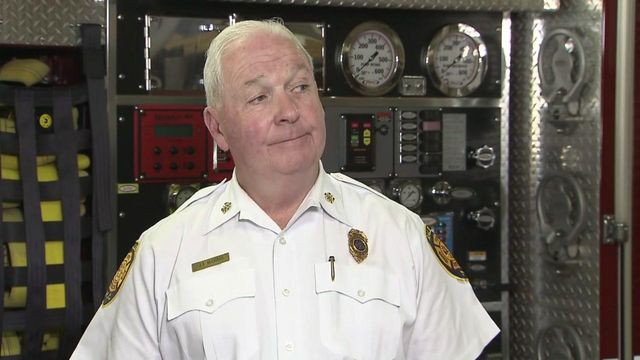Investigators can't determine cause of $50M Raleigh apartment fire
Investigators on Friday said they were unable to determine the cause of a five-alarm fire in March that destroyed an unfinished downtown Raleigh apartment building.
Posted — UpdatedThe City of Raleigh said in a news release on Friday morning that there were a number of potential causes of the fire at The Metropolitan apartment complex, some of which could not be ruled out.
"After thorough hypothesis, development, testing and evaluation, investigators were unable to definitively eliminate several accidental and incendiary scenarios," the city said in the release. "These possibilities include: electrical sources, an intentional act, and the possibility of a heating fire ignited by trespassing squatters. The viability of numerous potential incendiary and accidental ignition sources dictates this fire to be classified as undetermined."
The city said several city and state organizations using more than 100 people investigated the fire from March 18 through March 24. The investigators conducted more than 300 interviews, carried out multiple state search warrants and removed roughly 25 tons of debris from the scene.
"This is very disappointing. I'd like to know because I'd like to prevent the next one from happening," said Raleigh Fire Chief John McGrath during a news conference. "Unless you know exactly what started it and caused it, you can't take measures to ensure it doesn't happen again."
"The investigation is not closed," McGrath said. "If we find other information, or if we find anything else that would lead us to say that a criminal act was committed, the investigation would be open."
Largest fire in decades
Raleigh historians said the five-alarm fire was the largest in the city in 90 years based on the size of the response, according to McGrath. Officials said 130 firefighters from the city and around Wake County battled the fire through the night.
One firefighter was injured by falling glass, according to officials, but the injury was not considered life-threatening.
Nearby buildings damaged
About 10 nearby buildings were damaged by the fire, including six floors of the neighboring 204-unit Link apartments and 17 floors of the Quorum Center condominium and office high-rise, according to fire officials.
Developer Ted Reynolds, who built the Quorum Center more than a decade ago and lives on the 15th floor, said he noticed his curtains were glowing when he turned out the lights late Thursday, and when he stepped out on his balcony to see what was happening, he saw flames shooting into the sky over his head.
"I didn't know what to think," Reynolds said, "but I didn't want to stop to talk about it. I wanted to get out of the building.
"Thank heavens we managed to get on the elevator before it cut off because she [wife, Peggy] couldn't have come down the steps," he said.
How did the fire spread so quickly?
Raleigh Fire Battalion Chief Kevin Coppage said all fires present a unique set of dangers. The main danger during the historic fire in downtown Raleigh was how quickly it spread and progressed to a five-alarm.
The structure wasn't complete, and the construction material appeared to be mostly wood.
"It creates a challenge for us as firefighters," Coppage said. "It would add to the fire load in many aspects. Depending on if it's under construction and if it's covered with a sprinkler system. There's a lot of different elements that contribute to how intense the flame would be."
Raleigh Fire Chief John McGrath said while the use of wood to build facilities has become a controversial topic, the structure was being built to code.
"That building itself, while it was under construction, had been inspected 50 times. They met all code, safety and building code requirements," he said.
While McGrath said the building was to code, the fact that the building was wood made a significant difference in how fast the fire spread. Because sprinklers were not installed, it added a challenging element to the situation.
• Credits
Copyright 2024 by Capitol Broadcasting Company. All rights reserved. This material may not be published, broadcast, rewritten or redistributed.






